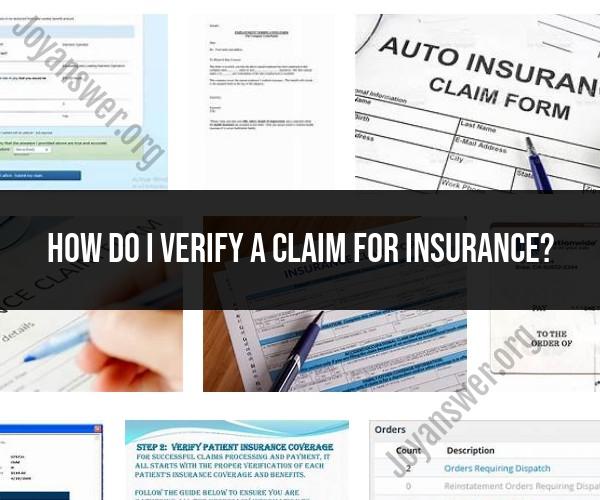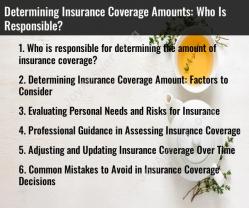How do I verify a claim for insurance?
Verifying an insurance claim involves a thorough review of the documentation and supporting evidence provided by the policyholder or claimant. The goal is to confirm the legitimacy of the claim and ensure that it complies with the terms and conditions of the insurance policy. Here are the general steps to verify an insurance claim:
Review the Claim Form:
- Begin by carefully reviewing the claim form submitted by the policyholder. Ensure that all required information is provided, including the date of the incident, a description of the loss or damage, and any supporting details.
Collect Supporting Documents:
- Request and collect all relevant documents and evidence related to the claim. Common documents may include:
- Police reports (for incidents like accidents or theft)
- Medical records (for health or injury claims)
- Repair or replacement estimates (for property or auto claims)
- Invoices or receipts (for expenses incurred)
- Photos or videos of the damage or incident
- Witness statements, if applicable
- Request and collect all relevant documents and evidence related to the claim. Common documents may include:
Contact the Policyholder:
- Communicate with the policyholder or claimant to clarify any discrepancies, request additional information, or seek clarification on the claim details.
Assess Policy Coverage:
- Review the insurance policy to determine the coverage limits, exclusions, deductibles, and any other relevant terms and conditions that may apply to the claim.
Investigate the Claim:
- Conduct an investigation, if necessary, to validate the claim. This may involve sending an adjuster or investigator to assess the damage or interview witnesses.
Verify Identity and Ownership:
- Confirm the identity of the policyholder and verify ownership or insurable interest in the property or assets being claimed.
Evaluate Medical Claims:
- For health insurance claims, work with medical professionals to assess the validity of medical expenses and treatments. Confirm the necessity of the medical care.
Consult with Experts:
- In some cases, it may be necessary to consult with experts, such as appraisers or forensic specialists, to assess the value of property or investigate the cause of a loss.
Review Third-Party Reports:
- If applicable, review reports from third parties, such as law enforcement agencies or medical institutions, to corroborate the claim details.
Check for Fraud:
- Be vigilant for signs of fraud or misrepresentation. Look for inconsistencies in the claim, evidence, or documentation.
Document the Verification Process:
- Maintain thorough records of all communications, documentation, and investigation steps taken during the verification process.
Make a Determination:
- Based on the gathered information and compliance with policy terms, make a determination regarding the claim's validity. Approve or deny the claim accordingly.
Notify the Policyholder:
- Communicate the claim decision to the policyholder in writing, explaining the reasons for approval or denial.
Process Payment or Benefits:
- If the claim is approved, process the payment or benefits according to the policy terms. Ensure that the policyholder receives the appropriate compensation.
Appeals Process:
- Inform the policyholder of the appeals process in case they disagree with the claim decision. Provide instructions on how to appeal.
Maintain Compliance:
- Throughout the process, ensure that you comply with all relevant laws and regulations governing insurance claims.
It's important to handle insurance claims with care, fairness, and transparency. Insurance companies often have specific procedures and guidelines for claim verification, so following internal protocols is essential. Additionally, maintaining clear and open communication with the policyholder can help resolve issues or disputes more effectively.













